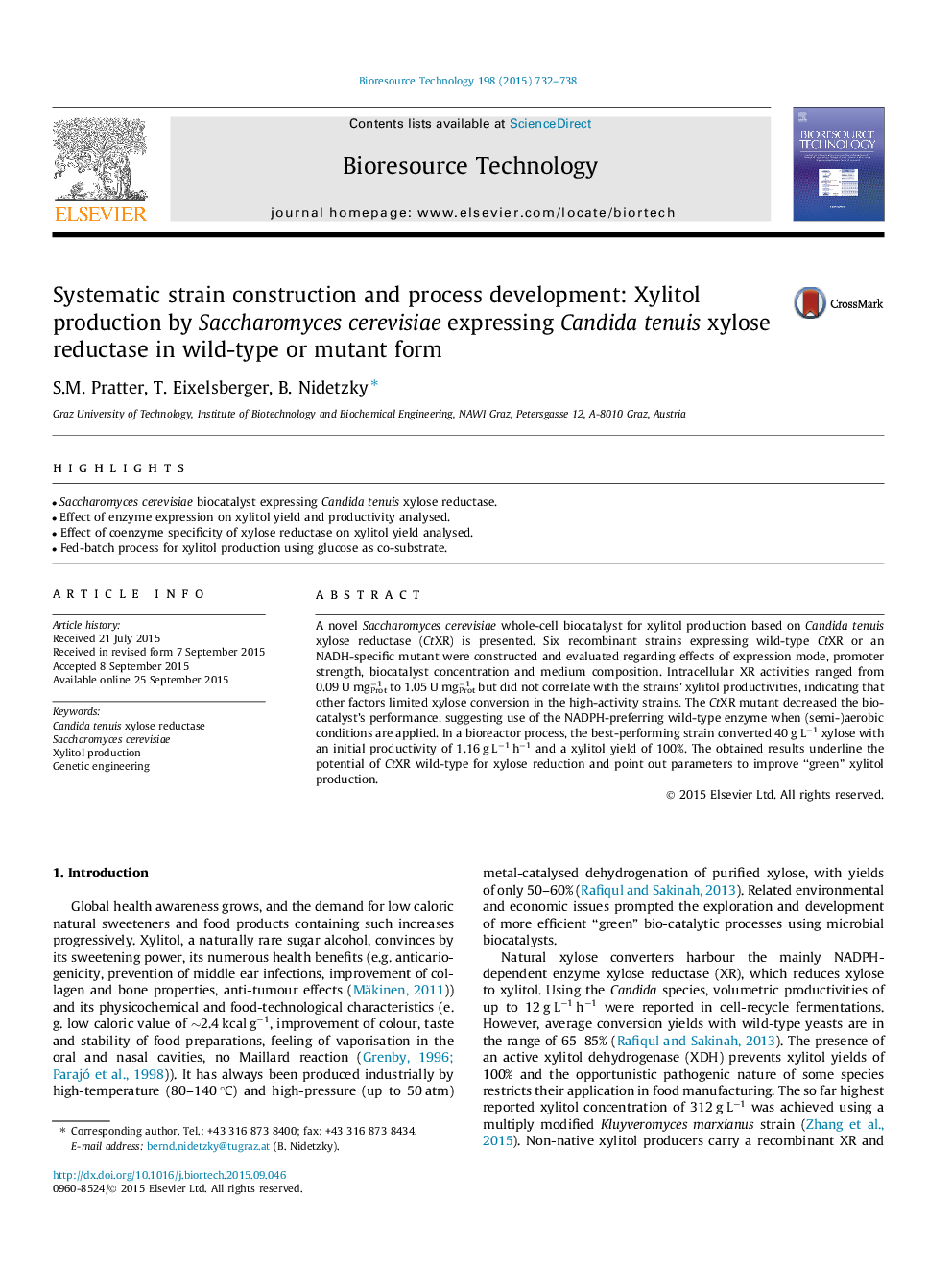| Article ID | Journal | Published Year | Pages | File Type |
|---|---|---|---|---|
| 679498 | Bioresource Technology | 2015 | 7 Pages |
•Saccharomyces cerevisiae biocatalyst expressing Candida tenuis xylose reductase.•Effect of enzyme expression on xylitol yield and productivity analysed.•Effect of coenzyme specificity of xylose reductase on xylitol yield analysed.•Fed-batch process for xylitol production using glucose as co-substrate.
A novel Saccharomyces cerevisiae whole-cell biocatalyst for xylitol production based on Candida tenuis xylose reductase (CtXR) is presented. Six recombinant strains expressing wild-type CtXR or an NADH-specific mutant were constructed and evaluated regarding effects of expression mode, promoter strength, biocatalyst concentration and medium composition. Intracellular XR activities ranged from 0.09 U mgProt−1 to 1.05 U mgProt−1 but did not correlate with the strains’ xylitol productivities, indicating that other factors limited xylose conversion in the high-activity strains. The CtXR mutant decreased the biocatalyst’s performance, suggesting use of the NADPH-preferring wild-type enzyme when (semi-)aerobic conditions are applied. In a bioreactor process, the best-performing strain converted 40 g L−1 xylose with an initial productivity of 1.16 g L−1 h−1 and a xylitol yield of 100%. The obtained results underline the potential of CtXR wild-type for xylose reduction and point out parameters to improve “green” xylitol production.
